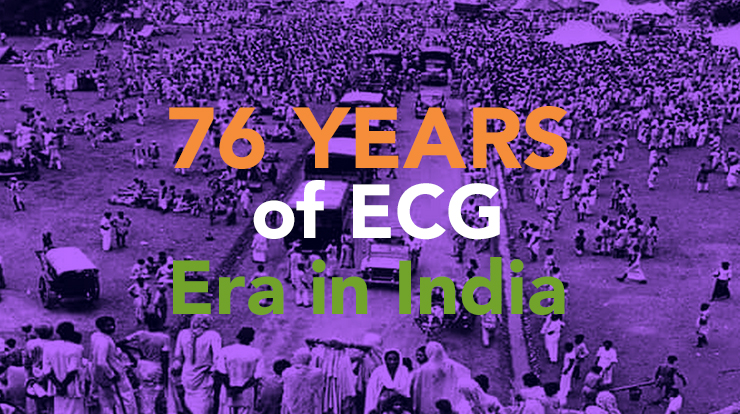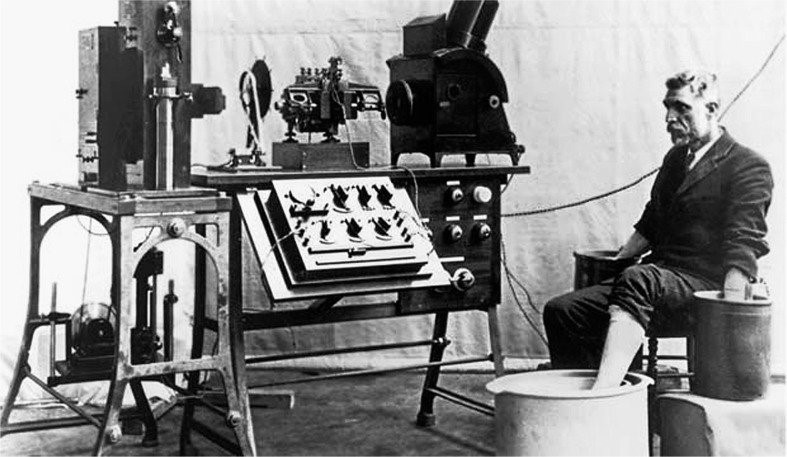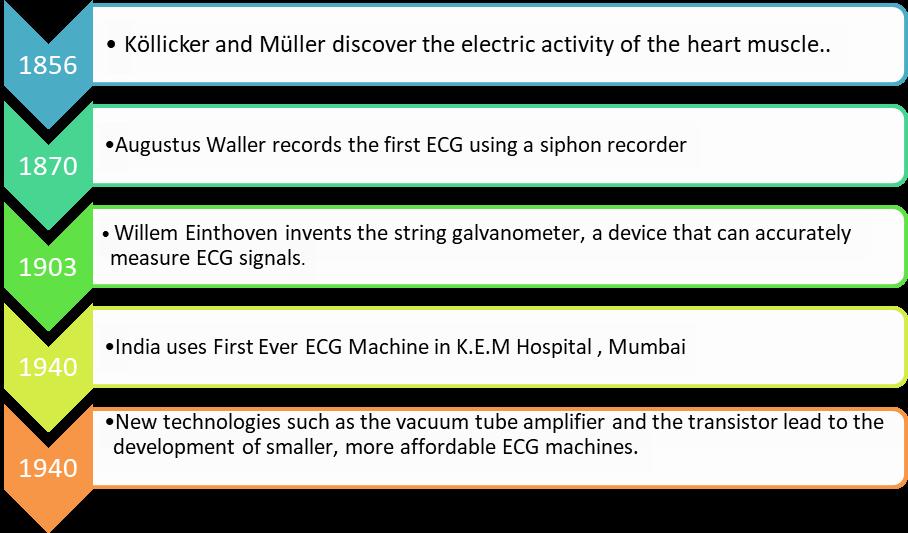
The field of cardiology has come a long way in India since independence. In the early days, heart disease was a major killer, and there were few resources available to diagnose and treat it. However, the introduction of ECG technology in the 1950s revolutionized cardiology in India, making it possible to diagnose heart problems more accurately and effectively.
Mapping Hearts, Saving Lives: The Birth of the 12 Lead ECG Machine :

First 12 Lead ECG machine – Source Internet
Over a century ago, the fascinating journey of the ECG began with the discovery of the heart’s electric activity. Scientists like Köllicker, Müller, and Muirhead in 19th-century London initiated efforts to capture the electric signals of the human heart. However, it was the early 20th century that witnessed the monumental leap with Willem Einthoven’s introduction of the string galvanometer – a pioneering 12-lead ECG machine that accurately measured heart signals. Einthoven’s visionary work marked a turning point in medical history, as it standardized ECG recording and interpretation, leading to his well-deserved Nobel Prize in 1924. This innovation laid the foundation for the transformative ECG devices we rely on today.
Einthoven’s work was ground-breaking, and it had a major impact on the development of cardiology. The ECG is now one of the most important diagnostic tools in medicine, and it has helped to save millions of lives. Einthoven is a true pioneer in the field of medicine, and his contributions will continue to benefit patients for many years to come.

Capturing Heartbeats: ECG Machine’s Journey Across India :

First ECG Machine Used in India-Source Internet
Parallel to Einthoven’s achievements, India had its own pioneers. Dr. Rustom Jal Vakil of K.E.M. Hospital in Mumbai identified high-risk patients for acute myocardial infarction at a time when cardiac care was in its infancy. The first-ever ECG machine was used in K.E.M. Hospital in the late 1940s. This significant step marked the introduction of ECG technology in the Indian medical landscape.
Before the introduction of ECG technology, the diagnosis of heart problems in India was largely based on symptoms. This often led to misdiagnosis and delayed treatment, which could have serious consequences. ECG technology made it possible to diagnose heart problems more accurately and quickly, which led to improved outcomes for patients.
In addition to improving the diagnosis of heart problems, ECG technology also made it possible to monitor the heart in real-time. This was a major advancement, as it allowed doctors to see how the heart was functioning and to make adjustments to treatment as needed.
The introduction of ECG technology was a major turning point for cardiology in India. It made it possible to diagnose and treat heart problems more effectively, and it led to improved outcomes for patients.
Small Device, Big Impact: India’s First pocket ECG machine ‘SanketLife’

First Made In India-Pocket Sized ECG SanketLife By Agatsa
As technology advanced, so did the accessibility of ECG monitoring. The global market for portable ECG devices witnessed remarkable progress. The journey began with single-lead ECG patches, providing a portable solution for heart monitoring. However, the challenge of continuous monitoring persisted.
The breakthrough came with the development of 12-lead touch-based ECG devices, revolutionizing the market. While single-lead or 6-lead ECGs focus on specific areas of the heart, a 12-Lead ECG device captures electrical signals from twelve different angles or perspectives
In 2016, Agatsa’s founders Rahul Rastogi and Neha Rastogi developed India’s first pocket-sized ECG, called SanketLife. SanketLife is a small, portable device that can be used to record a 12-lead ECG at home. The device is linked to a mobile app that allows users to store, analyze, and interpret their ECG results. Users can also share their ECG results with their doctor for further consultation.
SanketLife has revolutionized the way ECGs are done in India. Previously, ECGs could only be done in hospitals or clinics, which was inconvenient for many patients. SanketLife allows patients to get their ECGs done at home, which is more convenient and affordable.
SanketLife has also made it possible for people to monitor their heart health at home. Users can use SanketLife to record their ECGs regularly and track any changes in their heart rhythm. This information can be used to identify potential heart problems early, which can lead to better treatment outcomes.
The development of SanketLife is a major advancement in the field of cardiac care in India. It has made it possible for people to get their ECGs done at home, monitor their heart health, and identify potential heart problems early. SanketLife is a marker of the post-independence revolution in cardiac care in India.
Conclusion:
As we commemorate India’s independence, we also celebrate the evolution of cardiology. The journey from Einthoven’s ground-breaking work to the present-day portable ECG devices demonstrates how innovation and dedication continue to transform healthcare. With Agatsa’s commitment to a healthier nation, the ECG era in India is poised to reach new heights, ensuring that every heartbeat is a step towards a healthier future.
